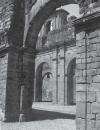Abstract
The remains of the Guarani Jesuit reductions in the XVII and XVIII centuries, form an important Cultural Patrimony common in Argentina, Brazil, Paraguay and Uruguay. They represent one of the largest influencial stages in the historical formation of existing societies. The Reduction of São Miguel Arcanjo was one of the thirty missioneiros towns of the Jesuit Province of Paraguay and was settled in the current site in 1687. Today their remains are part of the National Patrimony, through the federal land registration made in 1938, and declared as Patrimony of the Humanity of UNESCO in 1983. In Brazil, the recognition process of the missioneiro legacy importance dates back from many decades. Initially, preservation work on the old remains of São Miguel Arcanjo was carried out by the Government of the Rio Grande do Sul State from 1925 to1927. That work guaranteed the preservation of this monument. In 1938 the National Historical Artistic and Patrimony Service (sphan) began its great first restoration work. At the same time, they built the Missions Museum wich was designed by the architect Lucio Costa. The decades that followed, countless conservation activities were developed. The field of work was widened. The interventions are not just to maintain the church of São Miguel in good condition, but to preserve all the elements, materials and inmaterials, that reflect the missionary culture.Apuntes is registered under a Creative Commons Attribution 4.0 International Public License. Thus, this work may be reproduced, distributed, and publicly shared in digital format, as long as the names of the authors and Pontificia Universidad Javeriana are acknowledged. Others are allowed to quote, adapt, transform, auto-archive, republish, and create based on this material, for any purpose (even commercial ones), provided the authorship is duly acknowledged, a link to the original work is provided, and it is specified if changes have been made. Pontificia Universidad Javeriana does not hold the rights of published works and the authors are solely responsible for the contents of their works; they keep the moral, intellectual, privacy, and publicity rights.
Approving the intervention of the work (review, copy-editing, translation, layout) and the following outreach, are granted through an use license and not through an assignment of rights. This means the journal and Pontificia Universidad Javeriana cannot be held responsible for any ethical malpractice by the authors. As a consequence of the protection granted by the use license, the journal is not required to publish recantations or modify information already published, unless the errata stems from the editorial management process. Publishing contents in this journal does not generate royalties for contributors.


